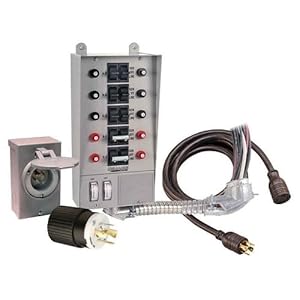NFPA 110 Requirements for Testing Your Generator
The National Fire Protection Association (NFPA) sets minimum standards for egress safety in commercial buildings. This includes standards for standby generators (a.k.a. gensets), which in many buildings, are responsible for powering emergency egress lighting (a.k.a. backup lighting). NFPA 110 contains the association's guidelines for generator testing for buildings that require a Level 1 or Level 2 generator. Testing requireMents are as follows:
NFPA 110 Requirements for Testing Your Generator
NFPA 110 Requirements for Testing Your Generator
NFPA 110 Requirements for Testing Your Generator
NFPA 110 Requirements for Testing Your Generator
Monthly Testing (Section 8.4.2.)
A genset should be tested under load for 30 minutes each month. A successful test can be judged in one of two ways: when the load raises genset exhaust gas to the minimum temperature that the manufacturer recomMends for monthly testing, or when a gensetruns at a minimum of 30% of its nameplate Kw rating for at least 30 minutes.
Some generators cannot operate until their water pressure and oil pressure to establish. For these generators, the 30-minute test should be concluded in less time to allow them to standby resume sooner than later.
Alternate Testing for Diesel Generators (Section 8.2.4.3)
Diesel generators that don't achieve the proper exhaust temperatures or fail to operate at 30 percent of the Kilowatt nameplate rating for at least 30 minutes should be (a) exercised under load for 30 minutes each month, and (b) exercised under-supplied load (i.e. from a load bank) for approximately two hours each year.
When conducting the test, yearlytesters should operate a genset for 30 minutes at 25 percent of its nameplate Kw rating, 30 minutes at 50 percent of its nameplate Kw rating, and 60 minutes at 75 percent of its nameplate Kw rating.
Companies that don't have emergency power Supply system (EPSS) technicians on staff should have a commercial power solutions provider perform NFPA 110 requireMents for generator testing.
The Importance of NFPA Generator Testing
Most commercial buildings are subject to a combination of federal, state and municipal codes that govern egress safety, and usually adDress backup lighting. Occupational Safety and Health Administration (OSHA) standards determine federal egress codes, while International Building Code(IBC), International Fire Code (IFC), OSHA and NFPA standards, determine state and municipal codes.
When a building features generator-powered backup lighting that is subject to federal, state, and/or municipal codes, it is also subject-either by code or implication to keeping and maintaining a working genset. When a genset malfunctions, so does generator-powered backup lighting-an occurrence that could lead to deadly egress jams.
In addition to issuing testing guidelines for generators, the NFPA has issued guidelines for testing backup lighting, and guidelines for impleMenting luminescent exit routes egress stripes in. In combination, these guidelines ensure that buildings are well prepared for low visibility evacuations, which protects building owners againstinjury claims, wrongful death claims, and workers comp claims that result from botched evacuations.
If your building is subject to NFPA testing guidelines for generators, conducting monthly and/or annual testing can ensure that it and the equipment that it would power are ready for a power ouTAGe. For emergency power equipment testing, call a commercial power solutions provider today.
NFPA 110 Requirements for Testing Your Generator
No comments:
Post a Comment